Planning worship?
Check out our sister site, ZeteoSearch.org,
for 20+ additional resources related to your search.
- |
User Links
Person Results
Johann Christoph Bach
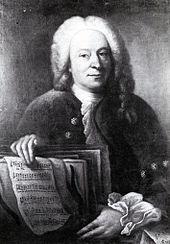
1642 - 1703 Person Name: Johann Christoph Bach, 1642-1703 Composer of "MELANCHTHON (ALL SAINTS)" in Hymnal and Liturgies of the Moravian Church
Johann Christoph Bach
Heinrich Theobald Schenk
1656 - 1727 Person Name: Heinrich T. Schenk Author of "Who Are These like Stars Appearing" in Trinity Hymnal (Rev. ed.) Schenk, Heinrich Theobald, son of Simon Schenk, pastor at Heidelbach, on the Schwalm, near Alsfeld, Hesse, was born at Heidelbach, April 10, 1656. He entered the Padagogium at Giessen, in 1670, and then pursued his studies at the University (M.A. 1676). In 1676 he returned to the Padagogium, as one of the masters; and was, from 1677 to 1689, "præceptor classicus." On Dec. 27, 1689, he was ordained as Town preacher and "definitor," at the Stadtkirche in Giessen. He died at Giessen, April 11, and was buried there April 15, 1727…The registers at Giessen give the date of his funeral, but not of his death; but say, that at his death he was aged 71 years less 10 days, which would rather suggest April 21 as the date of his birth.) Only one hymn is known by him, but it is a hymn which is found in almost all recent German hymn-books; and, through translations, in many recent English collections. It is:—
Wer sind die vor Gottes Throne. Eternal Life. This is found in the Neuvennehrtes Gesangbilchlein, Frankfurt-am-Main, 1719, No. 362, p. 341… It is a beautiful hymn on the Church Triumphant (i.-xiii.), and on the aspirations of the Church Militant to attain the same victorious glory. Translated as:—
1. Who are these like stars appearing. By Miss Cox, in her Sacred Hymns from the German, 1841, p. 89, being a very good translation of st. i.—vi., ix.-xi., xiv.-xvii., xx. This has come into extensive use in the cento adopted in Alford's Psalms & Hymns, 1844; and repeated in Hymns Ancient & Modern, 1861; being the trs. of st. i., iii.-v., ix. Other centos are found in Rorison's Hymns & Anthems, 1851, &c. Other forms may also be noted:—
(1) "Lo! a multitude appearing." This, in T. Darling's Hymns for Ch. of England, 1874, is based on Miss Cox's st. i., iv., v., with two additional stanzas.
(2) "Who are these in dazzling brightness. Bearing the victorious palm."
2. Who are these in light adoring. By A. T. Russell, as No. 145 in his Psalms & Hymns, 1851 ; being a tr. of st. i., iv., xi., xv.
3. Who are those before God's throne, What the crowned host I see. This is a good tr. of st. i.-vi., ix., x., xiv., xvii., xx., by Miss Winkworth in herLyra Germanica, 1st Ser., 1855, p. 207
Other translations are:—
(1) "Who are those before God's throne, What the countless." By J. D. Burns, in the Family Treasury, 1859, pt. i., p. 307; and his Memoir & Remains, 1869, p. 267. (2) " Who are those round God's throne stand-ing." By Miss Manington, 1863, p. 90. (3) "What is this host that round the throne." By Miss Warner, 1869, p. 20. [Rev. James Mearns, M.A.]
--Excerpts from John Julian, Dictionary of Hymnology (1907)
Heinrich Theobald Schenk
Johann G. C. Störl
1675 - 1719 Arranger of "ALL SAINTS OLD" in The Hymnal Johann Georg Stoerl; b. 1675, Kirchberg; d. 1719, Stuttgart
Evangelical Lutheran Hymnal, 1908
Johann G. C. Störl
A. P. Berggreen
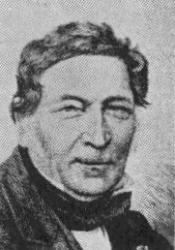
1801 - 1880 Composer of "[Who are these like stars appearing]" in The Lutheran Hymnary Andreas Peter Berggreen, born in Copenhagen, March 2, 1801. Instrumental and vocal composer; took up music as a profession after having first been compelled to study law, became organist at Trinity Church, Copenhagen, in 1838, professor of vocal music at the Metropolitan School in 1843, and inspector of the same branch in all public institutions. Works: Collection of songs, with guitar (Copenhagen, 1822-1823); Romances (1823); Ballads and Romances (1824); Variations for guitar (1825); Wedding Cantata (1829); Billedet og bustan (The Portrait and the Bust), comic opera given at Copenhagen, 1832; Songs for the use of schools (1834-39); Popular songs and national and foreign melodies, for pianoforte (1842-47); Twelve Swedish songs (1846); National songs (1848); Songs to poems of Bellmann (1850); Six Swedish songs of Runeberg (1852); Several cantatas.
Cyclopedia of Music and Musicians by John Denison Camplin, Jr. and William Foster Apthorp (Charles Scribner’s Sons, 1888)
https://archive.org/details/cyclopediaofmusi01cham/mode/2up
A. P. Berggreen
F. E. Cook
Translator of "Who are these like stars appearing" in Songs for the Lord's House
F. E. Cook
Ethelbert W. Bullinger
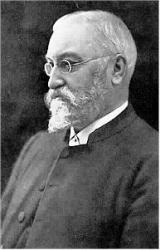
1837 - 1913 Person Name: Rev. E. W. Bullinger, D.D. Composer of "CLAVERING" in The Durham Mission Tune Book Ethelbert William Bullinger DD United Kingdom 1837-1913. Born in Canterbury, he was an Anglican clergyman, Biblical scholar, and ultradispensationalist theologian and writer. Educated at King's College, London, he became a good organist, singer, and composer. He married Emma Dobson, 13 years his senior, and they had two sons. In 1861 he began as Associate Curate to the parish of St. Mary Magdelene, Bermondsey, and was ordained as priest in the Church of England in 1862. He served as parish curate in Tittleshall until 1866, then Notting Hill until 1869, them Leytonstone to 1870, and finally Walthamstow, until becoming Vicar of the new parish of St. Stephen's in 1874. He resigned his vicarage in 1888. In 1867 he was clerical secretary of the Trinitarian Bible Society, which he held (except for illnesses) until his death. The Society completed and published a Hebrew version of the New Testament, the Tanakh (introduction to the Hebrew Bible), formation of the Brittany evangelical Mission Society under Pasteur LeCoat and translation of the Bible into Breton, also producing the first ever Protestant Portuguese reference Bible. It also distributed Spanish Bibles in Spain after the 1868 Spanish Revolution. Bullinger, a practiced musician, collected and harmonized untranscribed hymns on his visits to Tremel, Brittany. He wrote many articles, edited a monthly journal “Things to come”. He wrote 4 Biblical works (16 works).
John Perry
Ethelbert W. Bullinger
J. H. Rosecrans
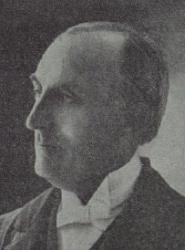
1845 - 1926 Composer of "[Who are these, like stars appearing]" in Hymns New and Old, No. 2 James Holmes Rosecrans studied at the Baxter University of Music in Friendship, New York. After teaching for two years, he joined the Fillmore Brothers Music House in Cincinnati, Ohio. As of 1880, he was teaching music in Douglas County, Colorado. In 1884, was an evangelist in California, and later was associated with evangelistic efforts in Texas, and taught music and Bible at Carlton College in Bonham, Texas. He published over 20 music collections in his lifetime.
© The Cyber Hymnal™ (www.hymntime.com/tch)
J. H. Rosecrans
Frederick A. J. Hervey

1846 - 1910 Person Name: F. A. J. Hervey Composer of "LOCHNAGAR" in The Westminster Abbey Hymn-Book Born: May 18, 1846, Westminster, Middlesex, England.
Died: August 8, 1910, Norwich, England.
Buried: St. Mary Magdalene’s Church, Sandringham, Norfolk, England.
Son of Alfred, Lord Hervey, Frederick was educated at Marlborough and Trinity College, Cambridge (BA 1868, MA 1872). He was ordained a deacon in 1869, and priest in 1870. He served as Rector of Upton-Pyne, Devon (1876); Sandringham (1878-1907); Canon of Norwich (1897); and Domestic Chaplain to King Edward VII (1901).
--www.hymntime.com/tch/
Frederick A. J. Hervey
John Hullah
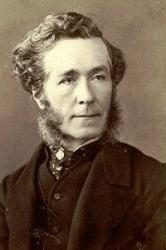
1812 - 1884 Composer of "[Who are these like stars appearing]" in The Children's Hymnal with Tunes Born: June 27, 1812, Worcester, England.
Died: February 21, 1884, London, England.
John Hullah
William Bentley

1759 - 1819 Person Name: William W. Bentley Composer of "[Who are these like stars appearing]" in Joyful Songs William Bentley (June 22, 1759, Boston, Massachusetts – December 29, 1819, Salem, Massachusetts) was minister, scholar, columnist, and diarist. His ancestors were early Puritan settlers to New England. He lived with his grandfather, William Paine, a well-to-do landowner, who sent him to North Writing School at the age of six, where he studied Latin and Greek. At the age of fourteen, his grandfather enrolled him in Harvard University. After graduating, he taught at Boston Latin School North Writing School, and then became a Greek and Latin tutor at Harvard University while attending graduate classes in theology. He was one of the first New England minister to profess unitarian beliefs and was a close friend of James Freeman, the first minister in the United States to call himself a Unitarian. In 1783 he was invited to be a candidate for assistant minister at Second Congregational(East) Church in Salem, Massachusetts, where he served until his death. The senior minister was James Diman, a Calvinist, who opposed Bentley's appointment; Diman allowed him to preach but not to administer the sacraments. The congregation, however, preferred Bentley's more liberal views. He prized morality and good works over Calvinist grace and faith. He wrote twice-weekly columns for the Salem newspapers summarizing foreign and domestic news. He owned a very large library, second only to Thomas Jefferson's, and kept a diary all of his life.
Dianne Shapiro, from "Annals of the American Pulpit" by William B. Sprague, Vol 8, New York: Robert Carter and Brothers, 1865; and "Dictionary of Unitarian and Universalist Biography" accessed 1/29/2017
William Bentley


 My Starred Hymns
My Starred Hymns


